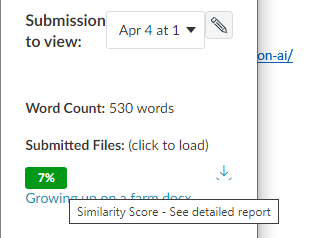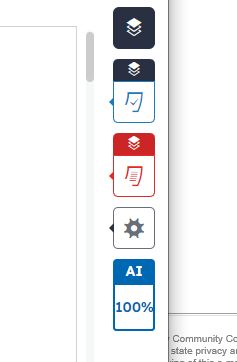Tip! Turnitin Takes on AI
ChatGPT! ChatGPT! You can’t say it 5 times fast, but lately it’s all anyone can talk about. It’s either the greatest thing since spring clipped breadboards or the end of civilization, life and the universe itself.
ChatGPT is an artificial intelligence chatbot: that is, an app you can have a conversation with. It runs on, and provides access to, a “large language model”: basically a library of text patterns intended to mimic the linguistic working of a human brain in a specific language (in this case, English).
You can have a free-wheeling conversation with ChatGPT, but what really has people talking is that you can give it a “prompt” asking for a text composition with any number of specific characteristics — length, topic, structure, style — and it will return you that very composition.
You don’t have to know anything about the topic or structure or style to get useful results. And ChatGPT doesn’t know anything in its own right about any topics — that’s not the kind of AI it is. It only repeats what it’s read on the internet. But it will repeat it as a new composition rather than as a quote (unless you ask it for quotes, and it might be making those up).
The opportunity for someone to have ChatGPT (or similar tools) compose text which they then pass off as their own is obvious. It isn’t straightforward plagiarism, or exactly a matter of hiring someone to write your paper. It’s potentially like hiring someone to plagiarize for you with such sophistication that it might never be detected as plagiarism.
Fortunately, Turnitin has already come to our rescue. The company, which is founded on plagiarism detection, recognized that tools like ChatGPT are creating text which presents some of the same problems as plagiarism but which can’t be detected as such. So Turnitin has built its own AI to detect AI writing.
The company rolled out the new features on 4 April 2023 in basically all of its services, including the one which we have built into our Canvas LMS. And every sample submitted to it since that date is automatically being checked for possibly having been written by an AI.
Professors don’t need to do anything to activate it (and can’t opt out, except by not using Turnitin). But AI Writing Detection works a little differently from the prior Similarity Report. The major difference is that it is only available to professors and administrators. In other words, when a student looks at the similarity report for their own work, they will not and cannot see the AI writing detection report. A professor will for the same work, but not in Canvas. To see the AI writing detection report requires clicking through the similarity report icon for the student’s submission to enter the Turnitin environment.
Click on the percentage Similarity Icon in the Canvas Speedgrader using Turnitin. Then you will see a AI icon in the lower right corner representing the percentage of AI content flagged by Turnitin.


The reason for the difference is because of the difference in what Turnitin is doing with AI writing detection. With the similarity report, Turnitin finds actual verbatim instances of pieces of text from a new submission in a prior submission or out on the internet. The only question is whether these similarities rise to the level of plagiarism.
Turnitin’s AI writing detection involves another AI evaluating a submission for the likelihood that it was written by an AI. The AI returns a percentage likelihood, something between 0 and 100%, and Turnitin’s confidence in that percentage is 98%. In other words, Turnitin is 98% confident that whatever likelihood its AI assigns to the writing having been done by another AI is accurate. But that leaves room for false positives (and negatives!) so it’s important that the likelihood only be reported to the professor and for the professor to then decide whether and how to handle the situation.
Turnitin has great further information and discussion available through its blog post announcing the release of its AI Writing Detection.

